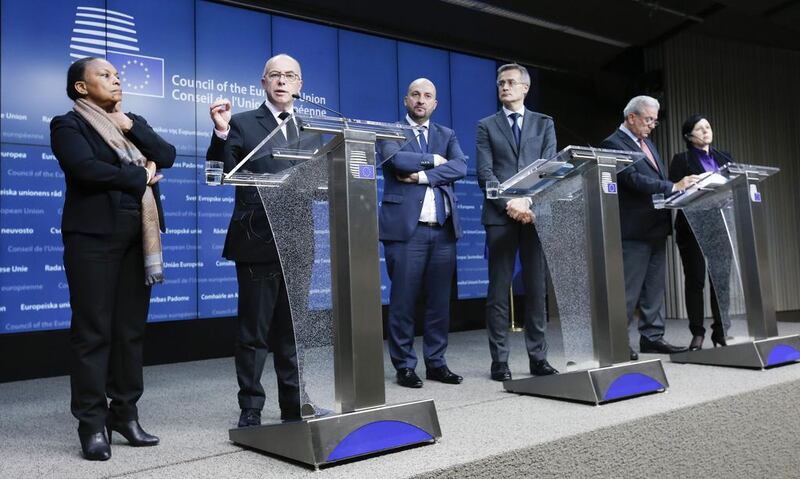In 1956 and 1967 two regional associations were formed to keep the peace, in Europe and Southeast Asia, respectively. Today the European Union has a population of over 500 million, and the Association of Southeast Asian Nations (Asean) has the third largest workforce in the world, at 625 million, after China and India.
For decades, however, most of the attention was on the European grouping. It grew, both in size and ambition, as its changing names indicate: the European Economic Community became the European Community, and then the EU. The former US secretary of state, Henry Kissinger, famously asked who should he call if he wanted to talk to Europe. He made no such request about Asean, and until recently the acronym would have needed explaining to almost anyone outside foreign policy circles.
But after the conclusion of the Asean and East Asia summits last weekend, attended by Barack Obama, UN secretary general Ban Ki-moon, and the prime ministers of Russia, China, India, Australia, Japan and Turkey, among others, it is worth asking: which of the two associations can look to the future with greater confidence, unqualified pride in its achievements, and certainty about its direction over the next ten years?
During the summit an Al Jazeera interviewer asked me what lessons Asean could learn from the EU on economic integration. But it is high time this comparison is reversed. The EU has become an example not to follow, but of what to avoid. The EU ought to be asking what guidance it could take from Asean, not the other way around.
Just look at the European Union today. The eurozone has been a disaster. It has caused rampant unemployment, torn the social fabric of many economies with an austerity imposed by Germany that leading economists such as Paul Krugman think was completely unnecessary, and driven social unrest across the continent.
The Schengen agreement that led to open borders between 26 states is seriously under threat, and may never function in the same way again, having been accused of facilitating the free movement not only of goods and services but of terrorists as well. The EU is bitterly divided on migration at a time when millions of refugees are attempting to reach the continent or have already arrived.
It is true that levels of awareness about the EU are high, but with that has not come affection. If the UK does vote to leave the union, it will not be out of ignorance but from a well-informed exasperation at the high handedness of unelected Eurocrats and the long-term failure to address a democratic deficit that suits elitist dirigistes for whom ever closer union is a sacred goal. Never mind the fact that it is not what their populations desire.
The EU has done too much, too quickly, and with too little consent – witness its history of demanding countries hold a second referendum whenever they vote no to any new proposal.
Asean, on the other hand, has been the unglamorous tortoise to the EU’s flashy hare. It has moved slowly – almost painfully so at times – but its political leaders have never raced ahead of their populations.
This is why today, with a free trade area already in place, there is no discernible popular dissent at all about the creation of the Asean community. The liberalisation, harmonisation of standards and removal of non-tariff barriers required are potentially disruptive, and could well cost jobs in niche or hitherto protected industries. But instead of rushing, the association is giving itself 10 years to achieve full implementation – a time frame that allows any painful transformations to be eased.
And this gradualist approach is paying off. Predictions about Asean’s future vary, but all are optimistic. One forecast suggests that collectively, it will be the fourth largest economy in the world by 2050. Another says that target could be reached in only 15 years. Growth in the euro area, meanwhile, was a miserable 0.3 per cent in the third quarter of 2015.
The European Union is fractured and flailing. More “Europe” cannot be the answer. That is the medicine that has sickened, not cured, the patient. The whole idea needs to be reimagined. A free trade area? Yes. A single currency that attempts to fit disparate economies into one-size-fits-all? No. Political union? Only if it had overwhelming support in every country.
A more open Europe that finally overcame its prejudices and admitted Turkey could be a much-needed bridge with the Middle East and Asia. Of course, it would have to be an EU that did much less. But given the spectacularly disastrous results of its overreach, that could only be an improvement.
It should, too, look at what Asean has got right, and how it has proceeded at all times with the consent of its peoples. I may have described it as an unglamorous tortoise, and it may strike some in Europe as preposterous to look to developing countries for a guide on how to rethink the union. If so, they should swallow their misplaced pride. After all, who won the race – the tortoise or the hare?
Sholto Byrnes is a senior fellow at the Institute of Strategic and International Studies, Malaysia





